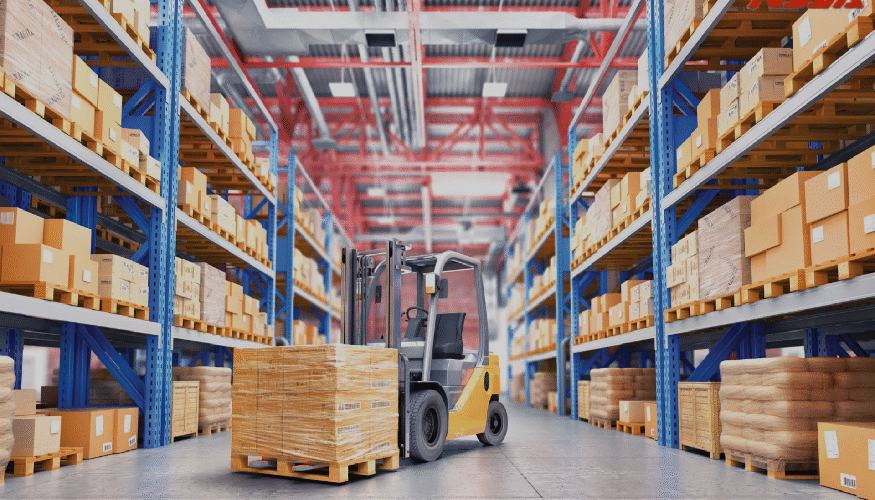In the fast-paced world of supply chain management, the future holds a promise of greater efficiency, streamlined operations, and cost savings through integrated warehousing and distribution systems. With technological advancements such as the Internet of Things (IoT), Artificial Intelligence (AI), and blockchain reshaping the landscape, businesses are poised to unlock new levels of productivity and competitiveness. In this blog post, we will delve into the technicalities of integrated warehousing and distribution and explore the key trends shaping its future.
The Foundations of Integrated Warehousing and Distribution
Before we delve into the future, it’s essential to understand the foundations of integrated distribution and warehousing. At its core, integrated warehousing and distribution is about seamlessly combining the storage and transportation of goods to create a more efficient and cost-effective supply chain. This integration hinges on real-time data sharing and communication between various components of the supply chain ecosystem.
Internet of Things (IoT)
The IoT plays a pivotal role in achieving this integration. By connecting devices, sensors, and equipment, businesses can gather real-time data on everything from inventory levels to equipment performance. This data allows for proactive decision-making, reducing the risk of stockouts, overstocking, or equipment failures. For instance, IoT sensors can monitor temperature and humidity in a warehouse, ensuring the safe storage of sensitive goods like pharmaceuticals. These sensors can also be installed on trucks and other goods carriers to analyse their operating efficiency in real-time, thereby aiding with costs and expenses.
Artificial Intelligence (AI)
AI complements the IoT by processing the vast amounts of data generated and turning it into actionable insights. Machine learning algorithms can predict demand patterns, optimize routes for deliveries, and even automate routine tasks such as inventory management and order processing. As AI continues to evolve, it will become increasingly adept at handling complex supply chain scenarios, further enhancing efficiency.
The Future Trends
Now that we have a solid understanding of the foundations, let’s explore the future trends that will shape the realm of integrated distribution and warehousing.
5G Connectivity: The advent of 5G technology will revolutionize the speed and reliability of data transfer within the supply chain. It will enable real-time tracking of trucks and shipments, remote monitoring of equipment, and even the use of autonomous vehicles for last-mile deliveries. With lower latency and higher bandwidth, 5G will unlock new possibilities for data-intensive applications in logistics.
Autonomous Vehicles: Autonomous vehicles, including drones and self-driving trucks, are set to become integral to distribution processes. These vehicles can operate round the clock, thereby reducing delivery times and costs. They are also less prone to human errors, making them safer and more efficient. Combined with AI-powered route optimization, autonomous vehicles will reshape the transportation aspect of integrated warehousing and distribution.
Predictive Analytics: Predictive analytics, powered by AI and machine learning, will become more sophisticated. Businesses will be able to forecast demand with greater accuracy, optimize inventory levels, and fine-tune supply chain operations. This will minimize waste, reduce carrying costs, and enhance customer satisfaction through better order fulfilment.
Robotics and Automation: Warehouses will see a surge in the adoption of robotics and automation. Autonomous robots can handle tasks like picking, packing, and inventory management. Collaborative robots (cobots) will work alongside human employees, improving efficiency and safety. These technologies will enable round-the-clock operations and faster order processing.
Sustainability Initiatives: As environmental concerns continue to grow, supply chains will certainly be prioritizing sustainability. Electric and hybrid vehicles will replace traditional combustion engine vehicles, reducing carbon emissions. Energy-efficient warehouses with solar panels and advanced insulation will minimize environmental impact. Blockchain will play a crucial role in verifying and promoting sustainable practices throughout the supply chain.
Enhanced Security Measures: With the increasing threat of cyberattacks and theft, security measures will evolve. Blockchain will provide secure authentication and authorization protocols, while AI-driven anomaly detection systems will spot irregularities in real-time. This comprehensive approach will safeguard the integrity of goods and data within the supply chain.
Conclusion
The future of integrated warehousing and distribution is an exciting landscape of technological advancements and innovations. Businesses that embrace these trends will reap the benefits of increased efficiency, reduced costs, and enhanced customer satisfaction. The integration of IoT, AI, and blockchain will form the backbone of these systems, while 5G connectivity, autonomous vehicles, and predictive analytics will drive them forward. Robotics, sustainability initiatives, security measures, and customization will ensure that businesses stay competitive in a rapidly evolving supply chain environment.

